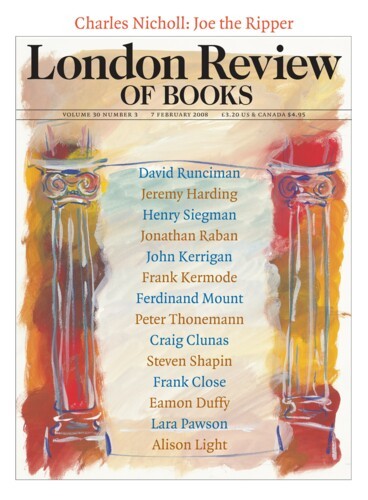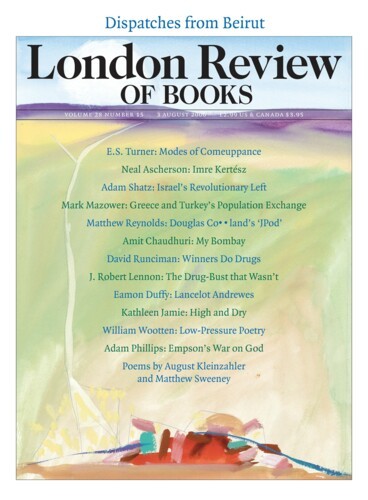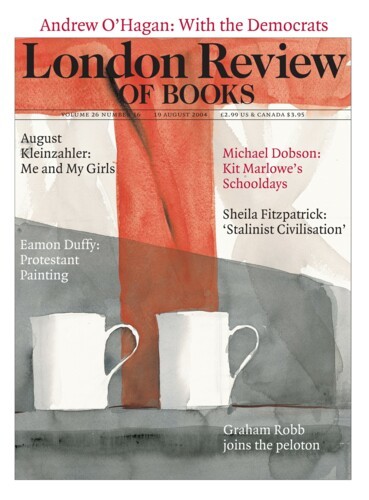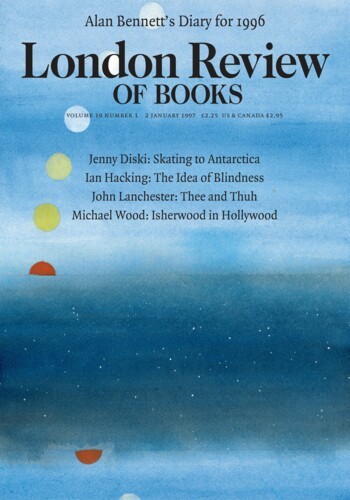Eamon Duffy
Eamon Duffy is professor of the history of Christianity at Cambridge.
Rolling Back the Reformation: Bloody Mary’s Church
Eamon Duffy, 7 February 2008
The reign of Mary Tudor has had few friends among historians, and the regime’s religious dimension has provided most of the copy for the bad press. Until comparatively recently, almost everyone who wrote about what has been routinely described as the ‘Marian Reaction’ agreed that to a greater or lesser extent the Catholic Church during her reign was backward-looking,...
Hew their bones in sunder: Lancelot Andrewes
Eamon Duffy, 3 August 2006
Much of the modern reputation of Lancelot Andrewes stems from an essay T.S. Eliot published in 1926, in which he ranked the sermons with ‘the finest English prose of their time, of any time’. Eliot’s essay marked the tercentenary of the death of a contemporary of Shakespeare, who between 1588 and his death had been successively or simultaneously vicar of St Giles Cripplegate;...
Brush for Hire: Protestant painting
Eamon Duffy, 19 August 2004
“Cranach and his highly commercialised factory-studio poured out images which decisively shaped the official visual propaganda for the new movement, creating dozens of Bible illustrations or woodcuts idealising Luther and lampooning the old religion . . . But religion was religion and business was business: when it came to winning a profitable commission, Cranach was a spiritual whore, a brush for hire to the highest bidder. A court painter who basked in the patronage of the great and not-so-good, he was far from fastidious about his subject-matter: he specialised, for example, in soft porn cabinet paintings of naked nymphs and goddesses, simpering alluringly at their artistic patrons.”
In Good Estate
Eamon Duffy, 2 January 1997
Every year, two and a half million people visit Westminster Abbey. Two-thirds of them, deterred no doubt by the combination of a tight tour schedule and the charge which is levied at this point, leave without ever penetrating beyond the choir, to the shrine of St Edward behind the High Altar and the royal tombs which surround it. Yet this was the heart of medieval Westminster, and the reason for the existence of the present building. Those who skip it miss more than holy bones. Within the shrine space, near the tomb of St Edward, stands the Coronation Chair, and in that combination of relics and royalty, sacred and secular power, lies the whole meaning of the Abbey. It is also the subject matter of Paul Binski’s subtle, learned and absorbing book.
Pieces about Eamon Duffy in the LRB
The Crowe is White: Bloody Mary
Hilary Mantel, 24 September 2009
Mary’s bishops wanted recantations more than they wanted executions. There was always the possibility of a last-minute change of heart; this would not free the condemned person from the stake, but it...
Through Trychay’s Eyes: Reformation and rebellion
Patrick Collinson, 25 April 2002
Eamon Duffy’s celebrated The Stripping of the Altars: Traditional Religion in England c.1400-c.1580 (1992), which opened our eyes to the vitality of late medieval English Catholicism, was a...
Homage to the Old Religion
Susan Brigden, 27 May 1993
At the Reformation a world was lost that could never be recovered. The images and altars, the dooms and roods of the parish churches, the towers and cloisters of the religions houses were...
Protestant Country
George Bernard, 14 June 1990
Henry VIII’s jurisidictional quarrel with the Papacy was not resolved, and its consequences are with us still. In Henry’s eyes the dispute was one of authority, not doctrine, but...
Read anywhere with the London Review of Books app, available now from the App Store for Apple devices, Google Play for Android devices and Amazon for your Kindle Fire.
Sign up to our newsletter
For highlights from the latest issue, our archive and the blog, as well as news, events and exclusive promotions.




